Seasickness is one of the most common concerns of those considering a cruise vacation. Even when the seas are relatively calm, some individuals are simply more sensitive to the ship’s movements. Further, the motion of the ocean depends on many factors like the time of year, weather conditions, and speed of your cruise ship. While captains do their very best to avoid rough seas, sometimes a little rocking is unavoidable.
This shouldn’t stop you from cruising though, because there are plenty of simple steps you can take to prevent seasickness on a cruise.
Can you get seasick on a cruise?
Motion sickness can occur with almost any mode of transportation. While many people aren’t sensitive to a cruise ship’s movement (including us), it is common for individuals to get seasick on a cruise — particularly when the seas are a bit rougher.
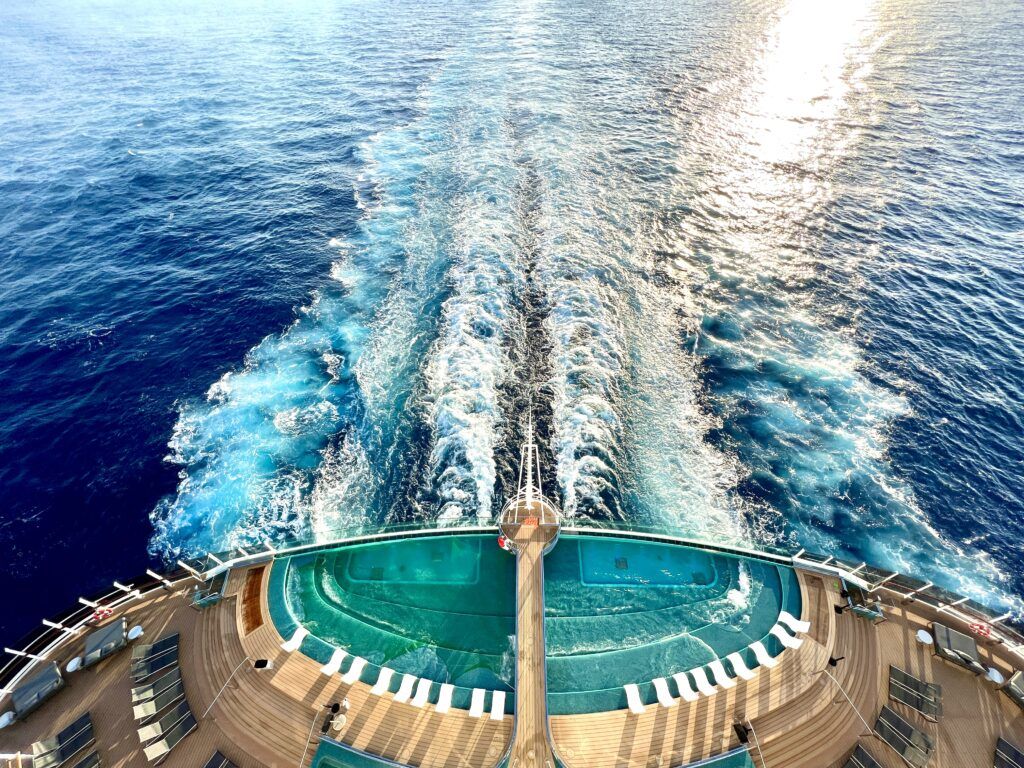
Seasickness occurs from an imbalance in your inner ear, or vestibular system, in response to the motion of the ship. It can result in symptoms of dizziness, nausea, headaches, and a feeling of being “off balance.”
Eventually, your body will become accustomed to the sensation, and you will get your “sea legs.” But why spend half of your trip feeling miserable? The symptoms of seasickness can be treated or even completely avoided if you plan ahead.
7 Easy Ways to Prevent Motion Sickness on a Cruise
1. Pick the right cruise ship and itinerary
Before you even set foot on your cruise ship, you can help reduce the possibility of motion sickness.
For first-time cruisers worried about seasickness on a cruise, we suggest booking a newer, larger ship. Travelers are less likely to feel the motion on a larger vessel. Newer ships are also designed with high-tech stabilizers that decrease the ship’s motion. By decreasing this movement, your balance system is less likely to be affected alleviating seasickness!
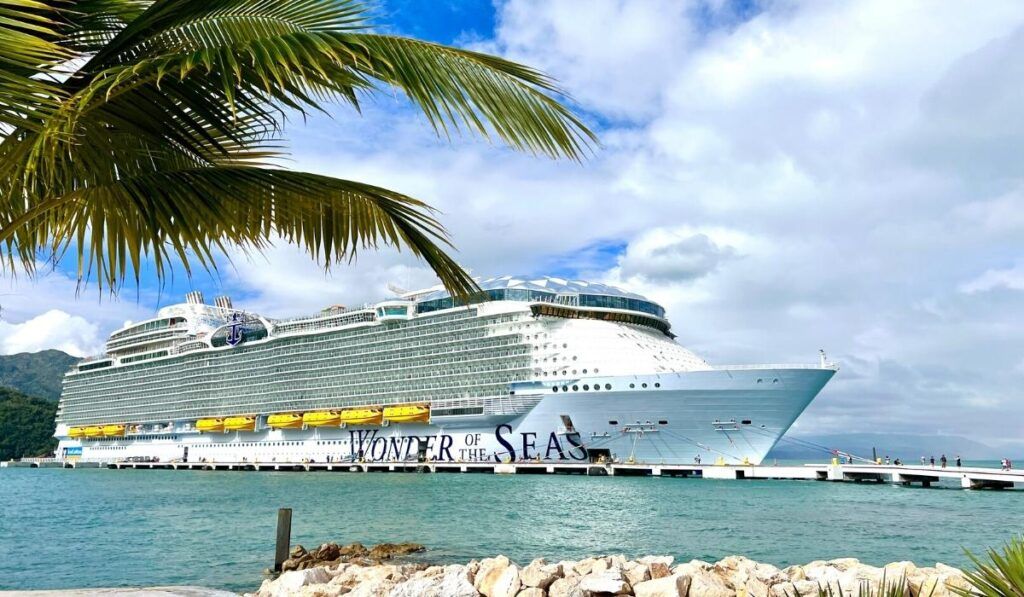
Additionally, those worried about the possible ill effects of cruising might want to opt for port intensive cruises. Southern Caribbean or Mediterranean cruises usually feature only a few sea days, and the time spent traveling between ports is usually shorter. These cruises might be a good option for those who are prone to motion sickness as you will be spending more time on land.
Further, you will want to avoid destinations that are known to have rougher seas, like the Pacific Ocean or the infamous Drake Passage between South America and Antarctica.
Considering the time of year you cruise can also play a part. For instance, if you are prone to motion sickness, you may want to avoid cruising during hurricane season in the Caribbean and avoid transatlantic crossings.
2. Choose the right cabin
While you will probably spend little time in your stateroom during the cruise, your cabin’s location can help reduce seasickness.
Getting a cabin in the middle of the ship will help as this area tends to have the least amount of movement, when compared to forward and aft-located cabins. A cabin in the middle to lower decks is also preferable as you will feel more motion the higher you are above sea level.
The worst cabins on cruise ships if you’re aiming to avoid motion are forward cabins at the top of the ship. If you are prone to seasickness, you will probably want to avoid the guaranteed cabin option as well.
Additionally, it is best to get an outside cabin, with either a window or a balcony. That way, you can set sight on the horizon in hopes that your body will reset its equilibrium.

3. Take some precautions on embarkation day
The first few hours of your voyage are crucial to helping your body get accustomed to the movement of the ship. It is best to spend some time outdoors with the fresh air. Using the horizon as a reference point, your body and brain can become better adjusted to the ship’s movements.
You should also try to avoid staring at stable objects, like reading the cruise planner or staring at a computer or smartphone screen. By training your body to properly anticipate motion, you can gain your sea legs.
Further, try to position yourself either parallel to the horizon or facing the same direction of the ship’s movement. Don’t face the opposite direction of movement as this can exacerbate symptoms.
4. Watch what you eat and drink
Drinking plenty of water during the cruise will help ease symptoms of seasickness. You will probably also want to avoid overconsumption of alcohol as this will further impair your balance system and can exacerbate the symptoms of dehydration and therefore seasickness as well.
Certain foods can also upset your stomach. You might want to skip deep fried foods or overly spicy foods on the first dinner or two until your body is adjusted. Caffeine can also worsen seasickness.
While it may sound like the last thing you want to do, keeping a full stomach will help to alleviate symptoms. Eating small meals and snacks and drinking carbonated beverages like ginger ale can also help.
Cruisers also swear by eating green apples and ginger as a natural remedy to help ward off seasickness on a cruise. We’re not sure if this is scientifically proven, but it’s worth a shot in helping to prevent seasickness on a cruise.
Further, be sure to rest and get adequate sleep.
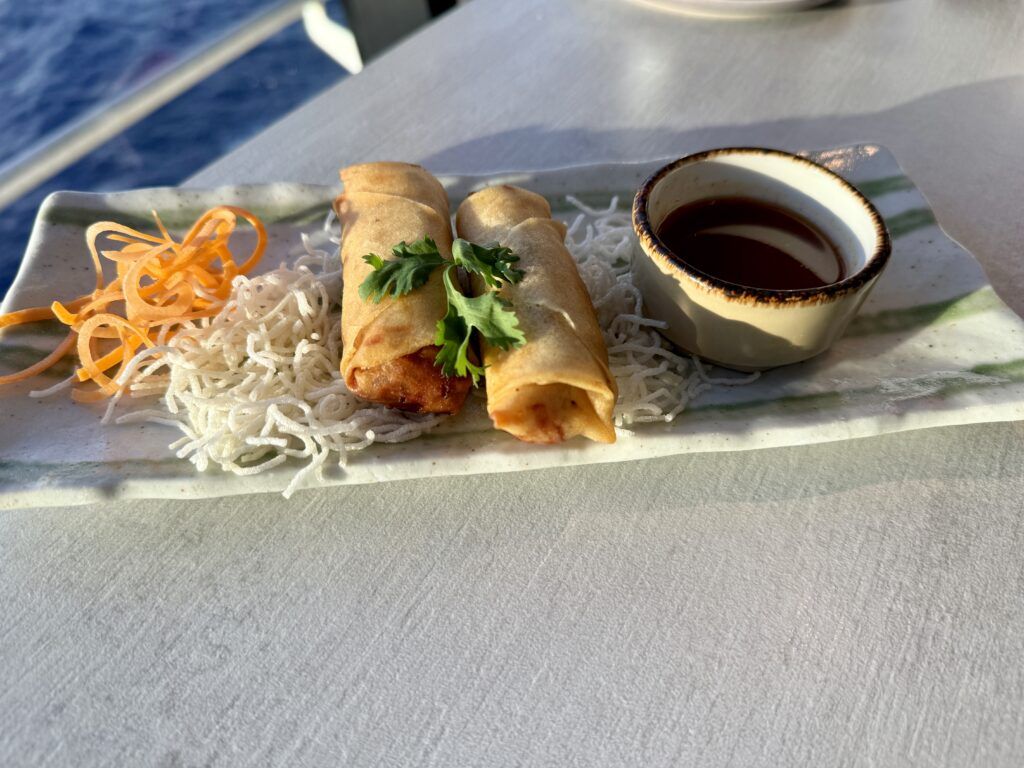
5. Pack some accessories
We know many people don’t like or can’t take medications or supplements for a variety of reasons.
One of the more effective (and less intrusive) remedies for seasickness is the Sea Band. This wristband works by providing slight pressure to acupressure points in your wrist which will help reduce the sensation of nausea and vomiting from motion sickness.
The bands work best if you place them on both wrists and do so before boarding the cruise ship.
6. Use over-the-counter aids
There are several medications that you can purchase at a local drugstore to help reduce or prevent seasickness on a cruise. Two of the most popular are Dramamine and Bonine.
Both drugs work better if you begin taking them the day before. Before taking any medication, you should first consult your doctor to determine if they’re right for you. You should also be aware of potential side effects from these over-the-counter medications.
As mentioned above, ginger is a commonly recommended natural remedy to calm an upset stomach. You can find the root in pill form at health food stores, or you can look for teas, candies, or gum which you can pack in your cruise carry-on bag if you begin to feel some ill effects.
7. Ask your doctor about prescription medications
If you know that you are prone to motion sickness, you may want to talk to your doctor about additional medical treatments prior to your cruise.
One popular treatment is Scopolamine patches. These small patches are placed behind your ear and help to reduce nausea and vomiting due to motion sickness. Like other approaches, it is best to place these patches on before getting on the ship. Another prescription medication used to treat vertigo or motion sickness is meclizine.
Again, you should consult your doctor to discuss whether these medications are right for you.
Bottom Line
If you’re prone to motion sickness on land or are a first-time cruiser who isn’t sure if you’ll have seasickness on board, consider planning ahead and/or packing remedies to help reduce the risk.
Some of these solutions, like picking the right ship, itinerary, and stateroom come before you even book the cruise. Others are easy, inexpensive solutions you can pack along with you like Sea Bands, Dramamine, and ginger. In fact, you can usually go down to the medical center on your ship and they’ll give you Dramamine for free as well.
Finally, make sure you’re utilizing the other tips and tricks mentioned here during the sailing. These easy ways to reduce or prevent motion sickness on a cruise will help ensure you have a great vacation on the high seas.
Comments
Are you motion sensitive? What are some of your secrets to avoid seasickness on a cruise? Drop us an anchor below with your suggestions to ensure smooth sailing on your cruise vacation.


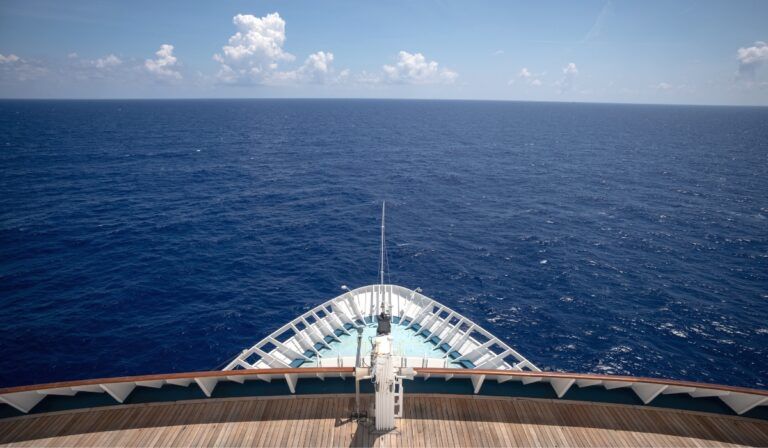

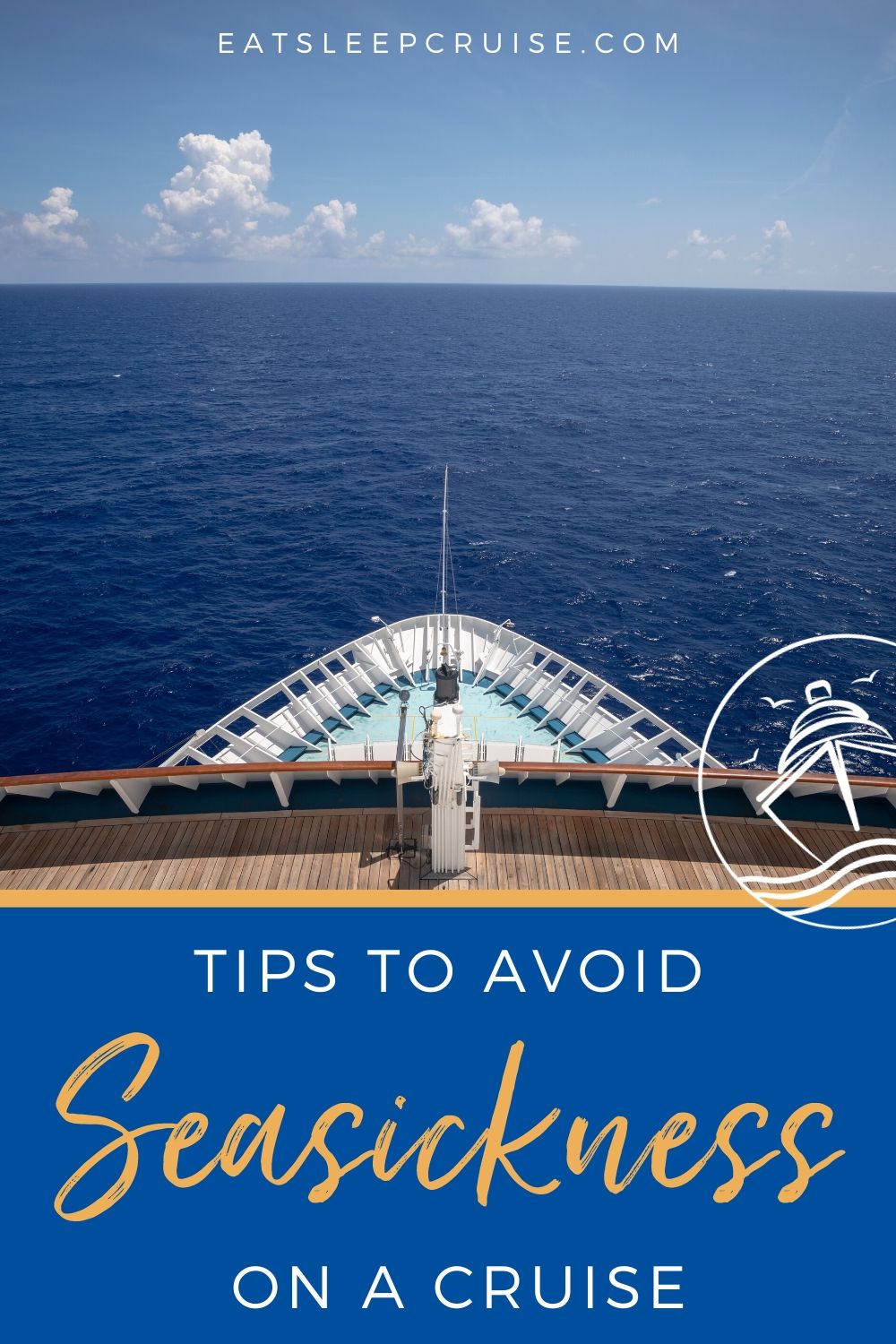
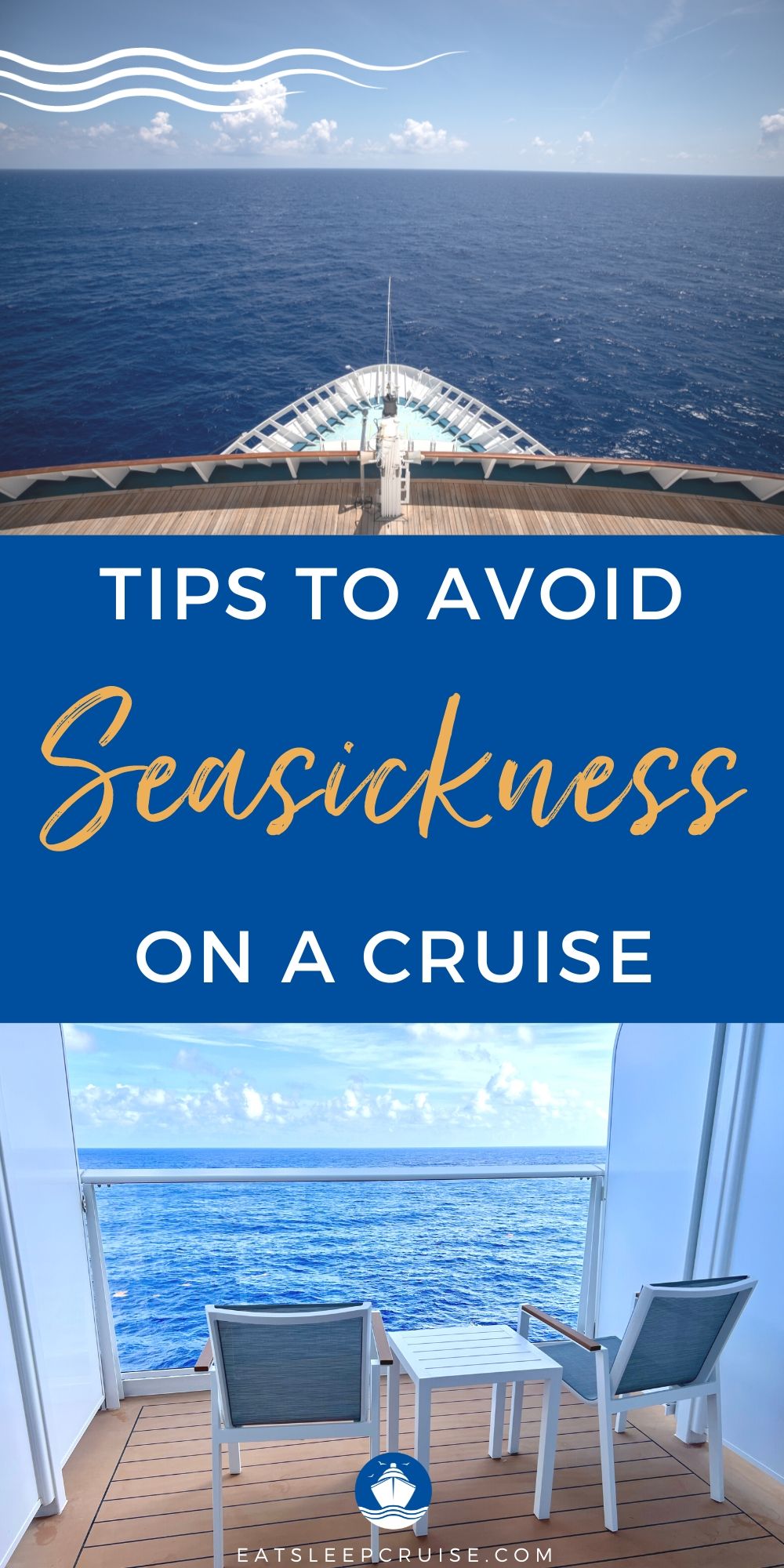





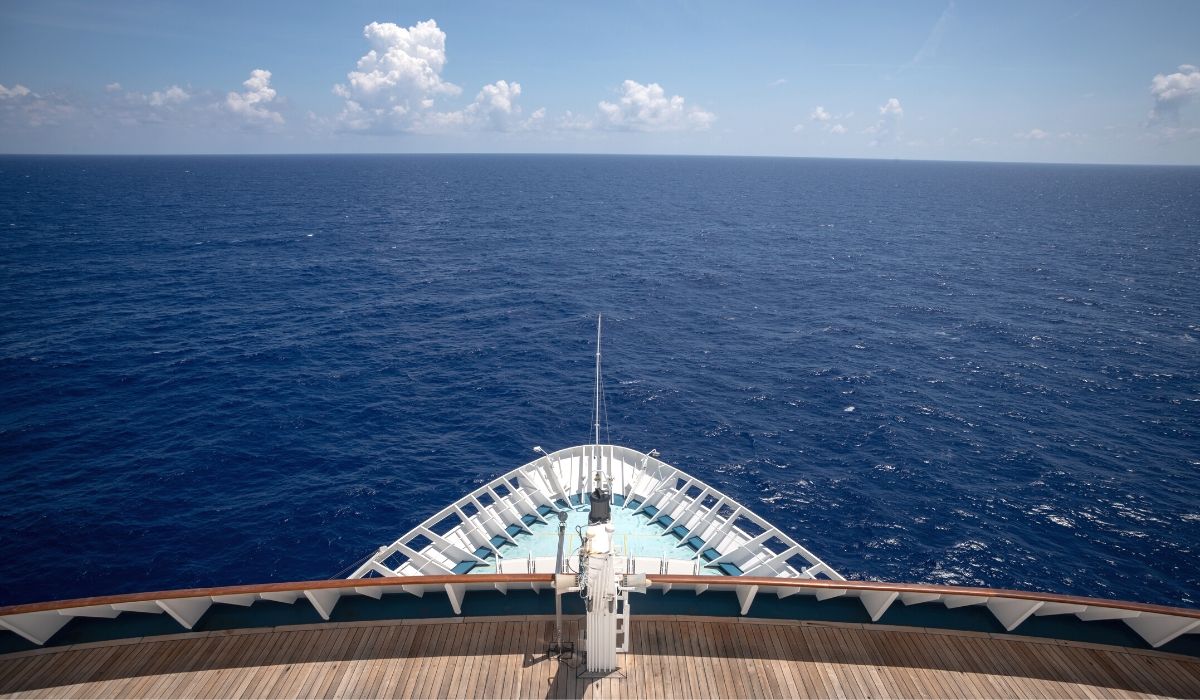



5 comments